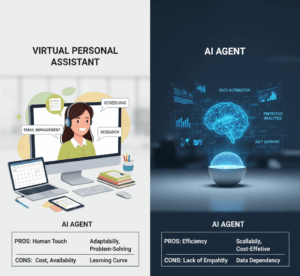
Flexi Staff vs. Traditional Employment: A Comparative Analysis
Did you know that 59% of UK businesses now use flexible staffing to meet fluctuating demands, according to a 2024 CIPD report? As the employment landscape shifts, choosing between flexi staff and traditional employment can make or break your business’s efficiency and growth. This article explores both approaches to help you make the right decision.
Key Areas We Will Cover
- What flexi staff and traditional employment mean for businesses
- Detailed pros and cons of flexi staff and traditional employment
- Real-world examples of how businesses use each model
- How to choose the best approach for your business needs
- The rise of hybrid staffing models and their benefits
- Answers to common questions about staffing strategies
Introduction
The modern workplace is evolving, with businesses facing the challenge of balancing flexibility, cost, and stability. Flexi staff and traditional employment represent two distinct approaches to workforce management, each with unique benefits and challenges. Understanding the differences between flexi staff and traditional employment is critical for optimising hiring strategies in today’s dynamic economy. This article provides a comprehensive comparison, offering insights, examples, and practical advice to help businesses make informed staffing decisions.
What Are Flexi Staff and Traditional Employment?
Flexi Staff Defined
Flexi staff, also known as temporary, contract, or gig workers, are hired for specific projects, durations, or tasks. They offer businesses the ability to scale their workforce quickly without long-term commitments. Examples include freelancers, agency workers, and seasonal staff.
Traditional Employment Defined
Traditional employment involves hiring permanent employees on fixed contracts with defined roles, salaries, and benefits. These employees are integral to a company’s long-term operations and often contribute to its culture and strategic goals.
Flexi Staff: Pros and Cons
Advantages of Flexi Staff
- Flexibility and Scalability: Flexi staff allow businesses to adapt to fluctuating workloads, such as seasonal peaks or project-based demands. For example, retail businesses often hire temporary staff during the Christmas season to manage increased customer demand.
- Cost Efficiency: By avoiding long-term commitments like pensions, healthcare, or paid leave, businesses can reduce overheads. A 2023 study by the Recruitment & Employment Confederation found that UK businesses save up to 20% on labour costs by using flexible staffing for short-term needs.
- Access to Specialised Talent: Flexi staffing provides access to niche expertise, such as IT specialists or graphic designers, for specific projects without the need for permanent hires.
Disadvantages of Flexi Staff
- Lack of Continuity: Temporary workers may not align with long-term company goals, potentially impacting team cohesion or project consistency.
- Limited Benefits: Flexi staff often lack access to benefits like health insurance or paid holidays, which can affect morale and retention for recurring contracts.
- Onboarding Overheads: Repeatedly training new temporary staff can increase costs and reduce efficiency, especially for complex projects.
Traditional Employment: Pros and Cons
Advantages of Traditional Employment
- Stability and Loyalty: Permanent employees are more likely to invest in the company’s long-term success, fostering a strong culture. For instance, a 2024 Deloitte report found that companies with stable workforces see 15% higher employee engagement.
- Comprehensive Benefits: Offering pensions, healthcare, and paid leave attracts top talent and reduces turnover. This is particularly valuable for roles requiring deep company knowledge.
- Greater Oversight: Permanent staff allow for consistent project management and adherence to company standards, ensuring quality control.
Disadvantages of Traditional Employment
- Higher Costs: Salaries, benefits, and training for permanent employees can strain budgets, especially for small businesses. Recruitment costs alone can exceed £5,000 per hire, according to Glassdoor.
- Limited Flexibility: Fixed contracts make it harder to scale down during lean periods, risking underutilisation of resources.
- Geographic Constraints: Traditional hiring often limits talent pools to local candidates, potentially missing out on global expertise.
Real-World Examples
- Flexi Staff in Action: A UK-based e-commerce company used flexi staff to handle a surge in orders during Black Friday 2024. By hiring 50 temporary warehouse workers through an agency, they met demand without committing to permanent hires.
- Traditional Employment Success: A London-based law firm maintains a permanent team of solicitors to ensure consistent client relationships and deep expertise in complex cases, contributing to a 10% year-on-year revenue increase.
Choosing the Right Model for Your Business
Selecting between flexi staff and traditional employment depends on your business’s goals, industry, and operational needs. Consider the following:
- Project Duration: Short-term or seasonal projects benefit from flexi staff, while long-term strategies suit traditional employment.
- Budget Constraints: Flexi staff are ideal for cost-conscious businesses, while traditional employment suits those investing in culture and stability.
- Skill Requirements: Specialised, short-term needs favour flexi staff, whereas roles requiring ongoing expertise benefit from permanent hires.
The Rise of Hybrid Staffing Models
A hybrid approach, combining flexi staff and traditional employment, is gaining traction. For example, a tech startup might maintain a core team of permanent developers while hiring freelance UX designers for specific projects. This model offers:
- Balanced Flexibility and Stability: Permanent staff provide continuity, while flexi staff handle peak workloads.
- Cost Optimisation: Businesses can allocate budgets efficiently by reserving benefits for core staff and minimising costs for temporary roles.
- Access to Diverse Talent: Hybrid models tap into both local and global talent pools, enhancing innovation.
A 2025 PwC report predicts that 65% of UK businesses will adopt hybrid staffing models by 2030, reflecting their growing popularity.
Conclusion
Both flexi staff and traditional employment offer unique advantages, and the best choice depends on your business’s needs. Flexi staff provide cost-effective flexibility and access to specialised skills, while traditional employment fosters stability and long-term growth. A hybrid approach can combine these benefits, enabling businesses to remain agile while building a committed workforce.
Optimise Your Staffing Strategy Today
Ready to transform your workforce? Explore flexible staffing solutions with StaffNow to scale your team efficiently or build a stable, permanent workforce to drive long-term success. Visit StaffNow for tailored staffing solutions.
Frequently Asked Questions
Wondering how to implement the right staffing model for your business? Below, we answer common questions to guide your decision-making process.
Flexi staff are hired temporarily for specific tasks or durations, offering flexibility and cost savings, while traditional employees are permanent, providing stability and long-term commitment.
Flexi staff are ideal for short-term projects, seasonal demands, or when specialised skills are needed temporarily. Traditional employment suits businesses prioritising long-term stability and culture.
Yes, many businesses use flexi staff as a “try before you buy” approach, converting high-performing temporary workers into permanent roles if needed.
A hybrid model combines permanent and temporary staff to balance flexibility and stability. For example, a core team handles ongoing operations, while flexi staff support peak periods or specialised projects.
Explore More Insights

The Impact of Hybrid and Remote Work on Hourly Staffing Trends for UK SMEs
Get in Touch The Impact of Hybrid and Remote Work on Hourly Staffing Trends for UK SMEs Did you know that in 2025, 74% of UK organisations have hybrid working

Skills-Based Hiring in the Flexible Workforce: Strategies for UK SMEs
Get in Touch Skills-Based Hiring in the Flexible Workforce: Strategies for UK SMEs Did you know that 90% of UK SMEs are grappling with skills gaps in their workforce, making

Navigating Diversity, Equity, and Inclusion (DEI) in On-Demand Staffing
Get in Touch Should You Hire a Virtual Personal Assistant or Build an AI Agent? Pros and Cons Did you know that UK SMEs with mature DEI practices see employees

Ethical AI in Recruitment: Mitigating Bias in Candidate Matching
Get in Touch Ethical AI in Recruitment: Mitigating Bias in Candidate Matching Did you know that by 2025, 70% of HR departments are predicted to use AI for core recruitment

Should You Hire a Virtual Personal Assistant or Build an AI Agent? Pros and Cons
Should You Hire a Virtual Personal Assistant or Build an AI Agent? Pros and Cons Get in Touch In today’s fast-paced digital landscape, where businesses strive for efficiency and innovation,

Human Virtual Assistants vs. AI Agents: Pros and Cons for Your Business
Human Virtual Assistants vs. AI Agents: Pros and Cons for Your Business Get in Touch “Can AI truly outperform a human virtual assistant, or is the human touch still the
